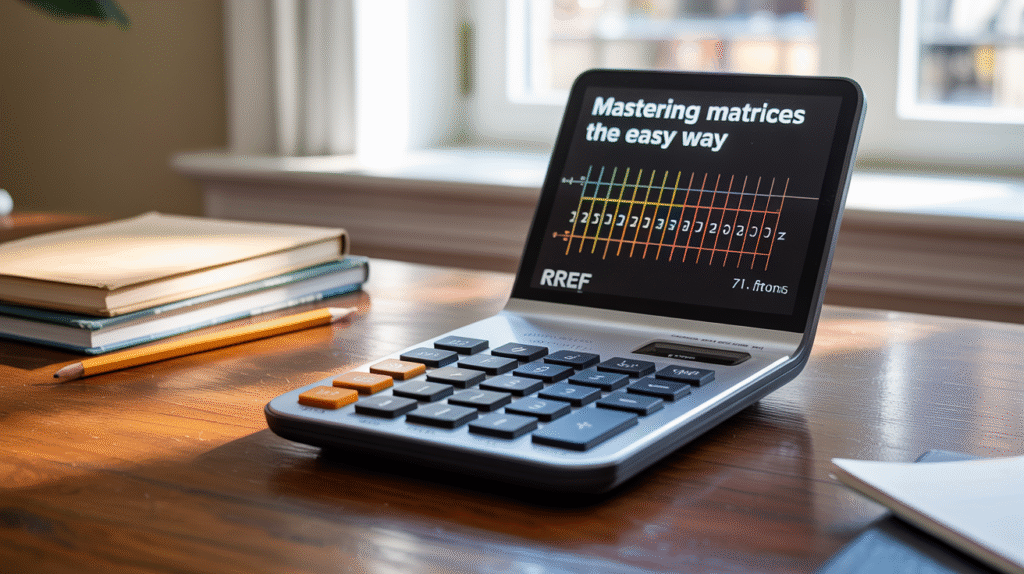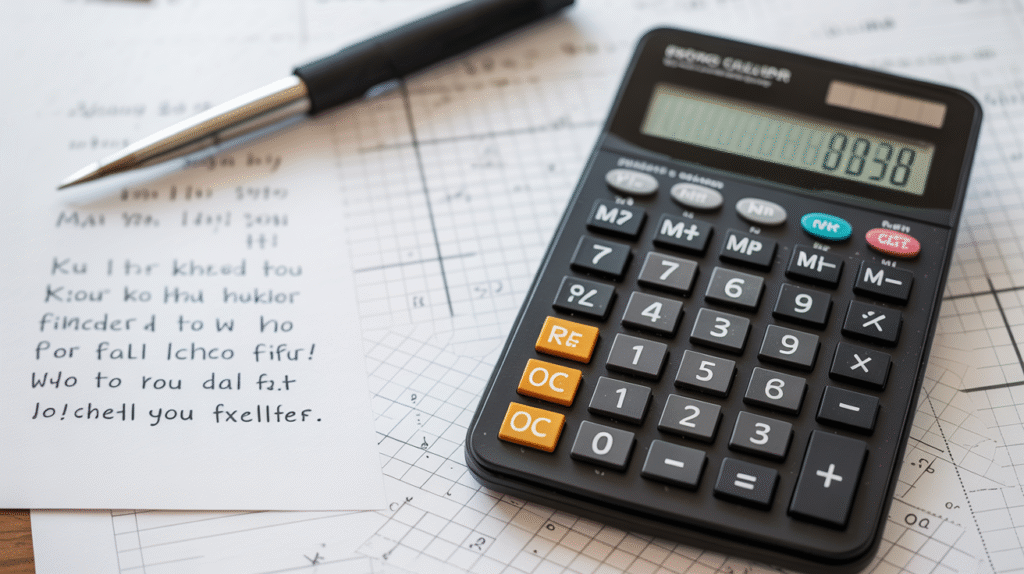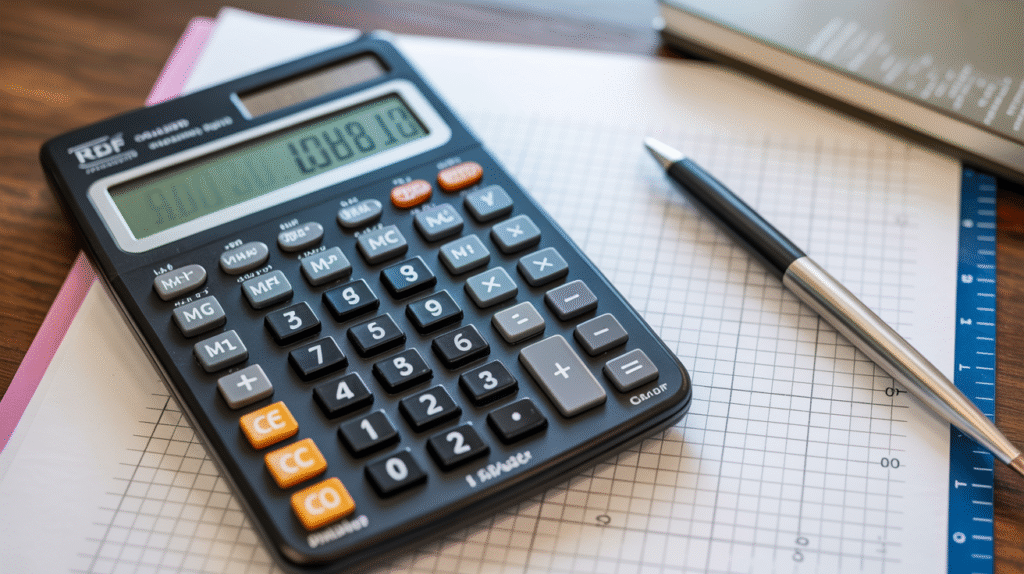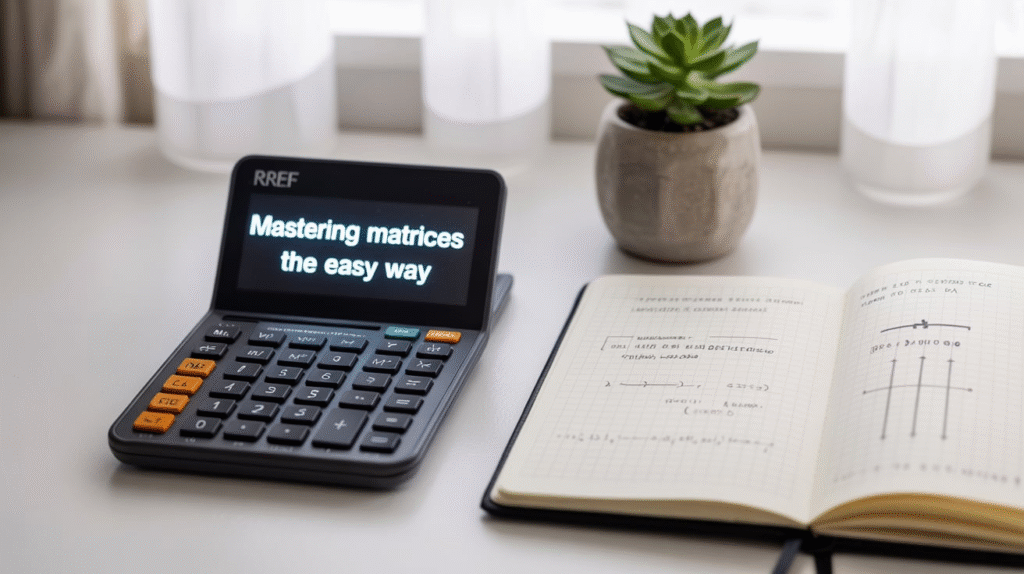Math can feel tricky sometimes—especially when you’re working with big matrices full of numbers. If you’ve ever sat staring at rows and columns, wondering how to find the reduced row echelon form (RREF), you’re not alone! That’s exactly where an rref calculator can help.
This powerful tool takes the hard work out of solving linear equations and simplifying matrices. Instead of crunching every number by hand, the calculator handles it for you—fast and accurately. Whether you’re a student learning linear algebra, a teacher creating examples, or a professional working with data, an rref calculator can save tons of time.
In this guide, we’ll explore everything you need to know—what RREF means, how to use the calculator, and why it’s so helpful. By the end, you’ll feel confident using one for homework, projects, or even your next math challenge.
What Is RREF and Why Does It Matter?

RREF stands for Reduced Row Echelon Form. It’s a special way of organizing a matrix to make solving equations easier. Think of it like cleaning your room—when everything is neat and in its place, it’s easier to find what you need.
In math, putting a matrix into RREF makes it easier to see solutions to systems of equations. Each row tells you something clear about your variables. For example, it can show whether your system has one solution, many solutions, or none at all.
When you do this by hand, it means performing a lot of steps—like dividing rows, swapping rows, or adding multiples of one row to another. But with an rref calculator, all that work happens automatically, with just one click.
How Does an RREF Calculator Work?
An rref calculator uses smart algorithms based on row operations. When you enter a matrix, it applies mathematical rules to reduce it into its simplest form. These steps are the same ones you’d use manually—but much faster and without mistakes.
The calculator first looks for “leading 1s” (the first nonzero number in a row). Then it clears out other numbers in that column by adding or subtracting rows. This continues until every row has a clean, easy-to-read pattern. The final matrix is in RREF.
In most tools, you can enter fractions, decimals, or whole numbers. Some even show step-by-step solutions so you can learn how it works. That makes it a great learning tool, not just a shortcut.
Why Students Love Using an RREF Calculator

Students often spend hours trying to solve matrices by hand. It can be confusing, especially when the numbers get large or messy. That’s why many turn to an rref calculator.
It helps you check your work instantly. You can type your matrix, hit “Calculate,” and see the correct answer. This way, you learn by comparing your steps with the tool’s solution. It builds confidence and improves understanding.
Plus, it’s great for homework or exam prep. Instead of wasting time on repetitive math, you can focus on learning concepts. The calculator gives instant feedback, helping you spot mistakes and fix them fast.
When Should You Use an RREF Calculator?
You can use an rref calculator anytime you work with matrices or linear equations. Here are a few common situations:
- When solving systems of linear equations.
- When checking your manual calculations.
- When simplifying matrices for larger math or computer science problems.
- When working on college or high school algebra assignments.
Even if you’re not a math expert, the calculator makes complex problems simple. It’s perfect for beginners, students, or anyone wanting accurate results fast.
Benefits of Using an Online RREF Calculator

Online rref calculators are easy to use and accessible from any device. You don’t need to download software or buy expensive programs. Just open your browser, enter the numbers, and get instant results.
Here are a few key benefits:
- Saves time: You get results instantly.
- Error-free results: It eliminates mistakes from manual calculations.
- Easy learning: Many tools show step-by-step solutions.
- Free access: Most online calculators are completely free.
- Supports large matrices: Some can handle 10×10 or even bigger matrices.
Using an rref calculator makes your study sessions smoother and more productive.
Step-by-Step: How to Use an RREF Calculator
Let’s go through a simple example to see how it works.
- Open an rref calculator in your browser.
- Choose the size of your matrix (for example, 3×3).
- Enter your numbers row by row.
- Click the “Calculate” or “Solve” button.
- Review the result—it will show your matrix in reduced row echelon form.
That’s it! Some tools even let you copy the result or see the intermediate steps. You can use these steps to understand how the process works in your math book too.
Common Mistakes When Working with Matrices
Even with a calculator, it’s easy to make small errors when entering data. Here are a few things to watch out for:
- Typing errors: Double-check every number.
- Wrong matrix size: Make sure your calculator matches the matrix dimensions.
- Misunderstanding results: Remember that the RREF form shows simplified data—it may look different from what you expect.
Always verify your entries before pressing “calculate.” That small step can save you confusion later!
Learning from the RREF Calculator
One of the best things about an rref calculator is that it’s not just a tool—it’s a teacher. When you use it carefully, you can learn how the steps work.
Some calculators show each row operation they perform. Watching these steps helps you understand the logic behind the math. You’ll start noticing patterns, like how a pivot (the first 1 in a row) helps eliminate other numbers in that column.
Over time, you can try solving small matrices by hand first, then checking your answers with the calculator. It’s a great way to practice and learn.
Real-Life Uses of RREF in the World
You might wonder, “Where do people actually use RREF outside of math class?” The answer: in lots of places!
Engineers use it to solve circuit problems. Computer scientists apply it in algorithms and data analysis. Economists use it to find patterns in large datasets. Even game developers and scientists rely on these calculations when modeling systems.
So, knowing how to use an rref calculator isn’t just about passing a test. It gives you real-world skills that can help in your career later.
Top Features to Look for in a Good RREF Calculator
Not all calculators are the same. When picking one, look for these features:
- Clear, simple interface.
- Step-by-step explanations.
- Ability to handle fractions or decimals.
- Mobile-friendly design.
- Option to copy or export results.
A good rref calculator should make learning fun, not frustrating. Choose one that’s accurate, fast, and easy to understand.
Are RREF Calculators Allowed in School?
This depends on your teacher or exam rules. Some teachers allow them for checking work, while others prefer manual solving. It’s always best to ask first.
However, using an rref calculator as a learning aid is usually fine. It helps you understand concepts faster. You can use it for homework, projects, or study sessions to double-check your understanding.
Just remember—use it as a helper, not a crutch. Learning how to do RREF by hand is still an important skill.
FAQs About RREF Calculators
1. What does RREF mean in simple terms?
It means putting a matrix in its simplest form so you can easily find solutions to equations.
2. How is an RREF calculator different from a matrix calculator?
An rref calculator focuses only on reducing matrices to RREF form, while general matrix calculators handle many operations.
3. Can I use an RREF calculator on my phone?
Yes! Most are mobile-friendly and work perfectly on any smartphone or tablet.
4. Does the calculator show steps?
Many do. They display every row operation so you can learn from it.
5. Is it free to use an RREF calculator?
Most online ones are 100% free. Some premium versions offer extra features, but the basic function is usually free.
6. Can I use it for large matrices?
Yes! Many calculators handle large matrices with no problem—sometimes up to 10×10 or more.
Conclusion: Simplify Your Math Journey with an RREF Calculator
Math doesn’t have to be scary or complicated. With the right tools, like an rref calculator, you can solve problems quickly and understand them better.
Whether you’re learning for school, preparing for exams, or solving real-world problems, this calculator saves time and builds confidence. It’s more than a shortcut—it’s a learning companion that helps you see math in a clearer, more enjoyable way.
So, next time you face a big matrix, don’t panic. Open your favorite rref calculator, enter your numbers, and watch the magic happen. Try it today—you’ll be amazed at how simple linear algebra can feel!



